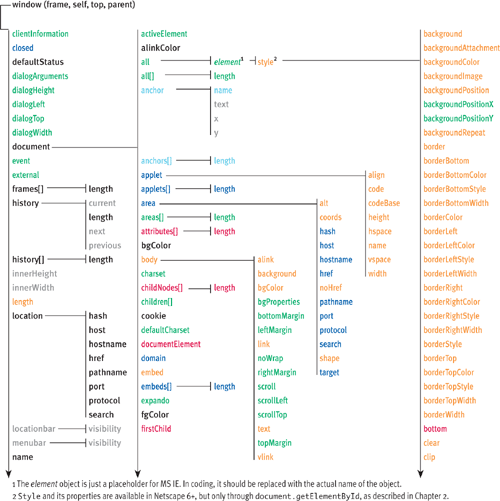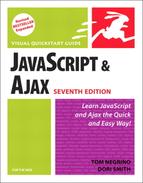Object Flowchart
Throughout this book, we’ve primarily used DOM scripting, relying on looking for particular ids versus particular objects. It’s simply easier to use getElementByID() and access the element you want directly, rather than descending the object tree, as with document.form.button.radio. We recommend that you use DOM scripting in your code, as well.
If you want information about what objects are available to you, check out the Firefox DOM Inspector, shown in Figure A.1. While not everything is cross-browser, it will give you a number of places to start.
Figure A.1. With the Firefox DOM Inspector, you can see precisely how the browser sees your code.

For older browsers, however, those options aren’t available, and you need to know what properties exist and how they all fit together, and that’s where this section fits in, as a reference to the older method of doing things.
JavaScript objects are connected together in a particular order, which you can think of in terms of an organization chart. The primary object in JavaScript is the current window, and all other software objects flow from that window, as seen in Figure A.2. This order of objects is often called the JavaScript object hierarchy, but that name is just a tad too self-important for this book.

Figure A.2.




